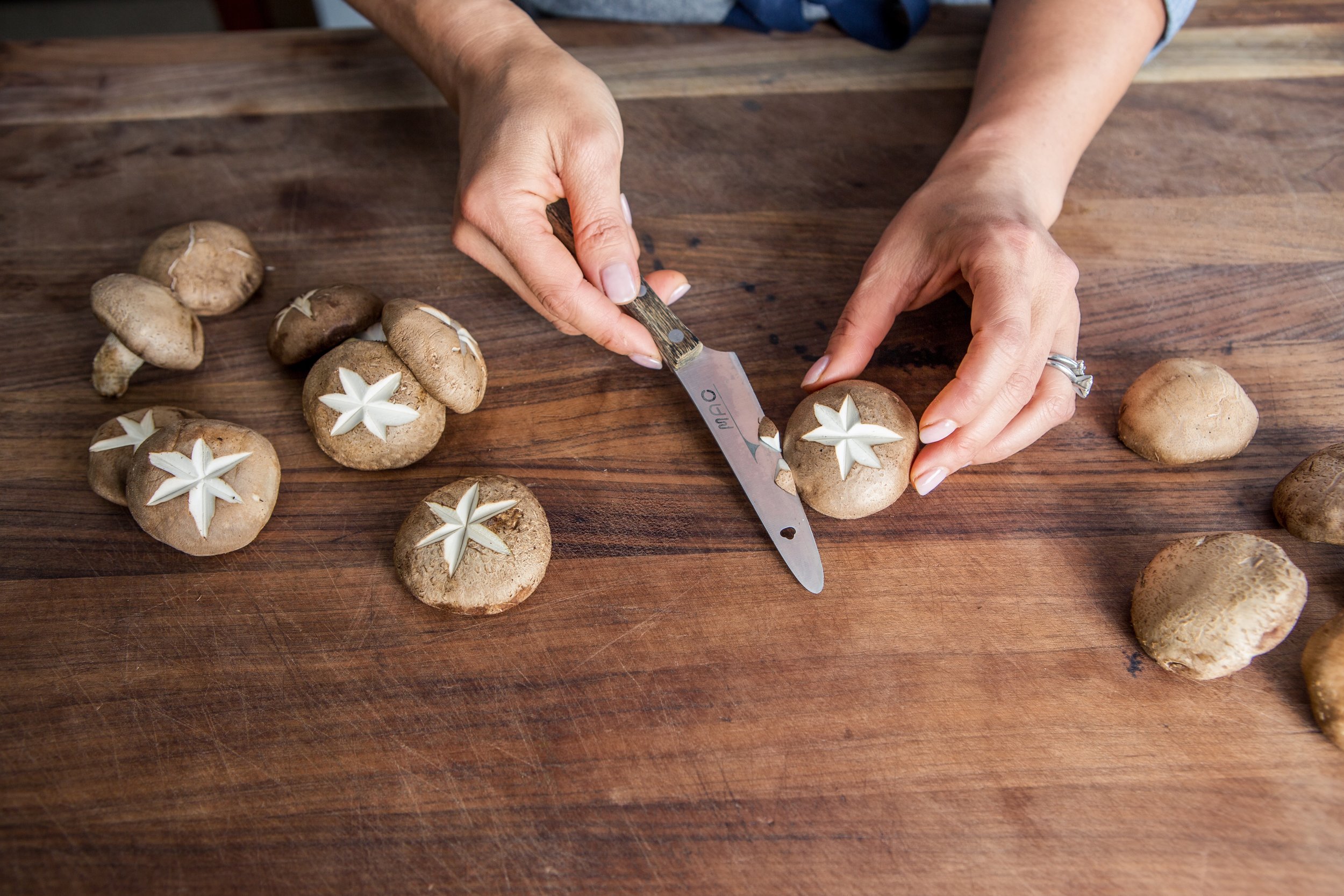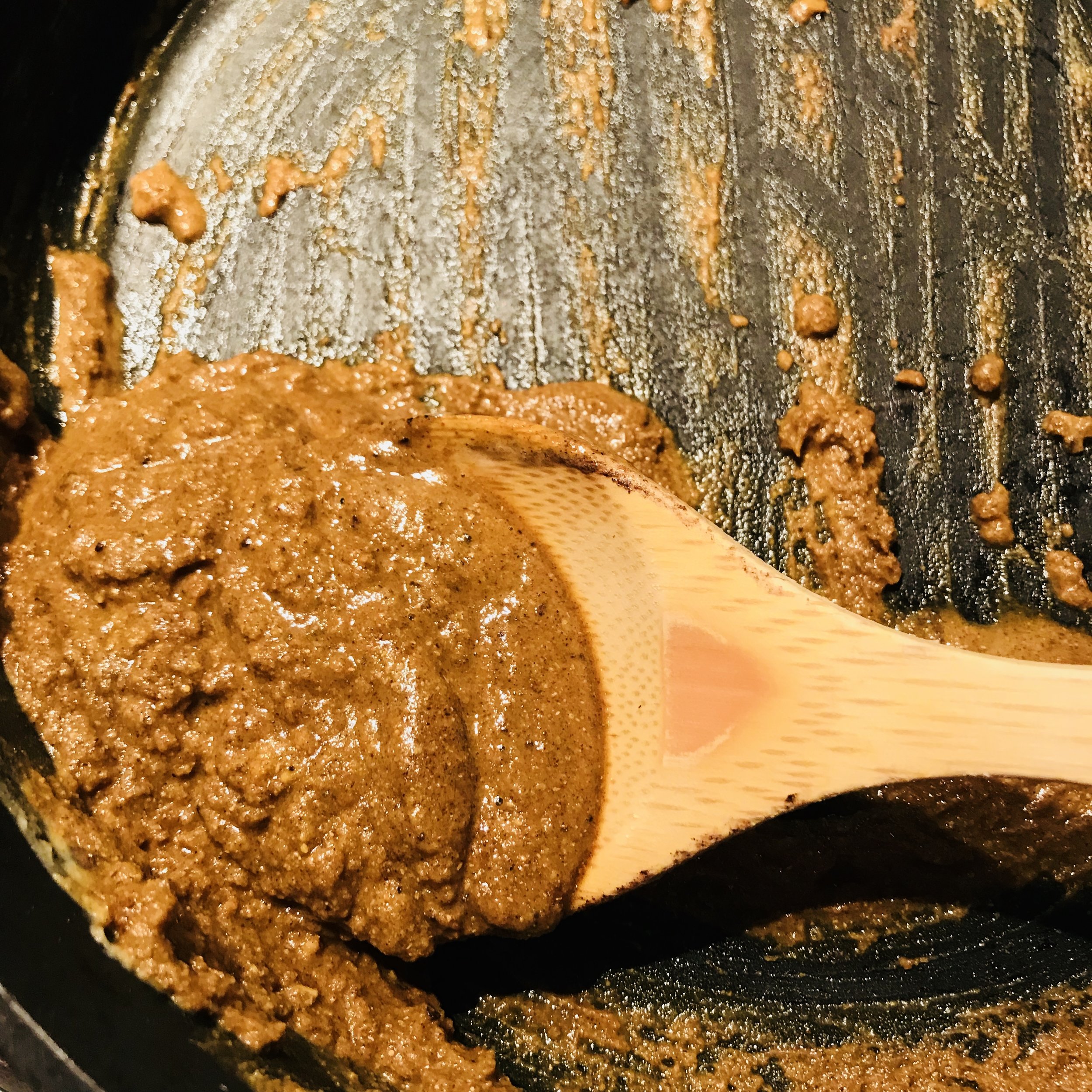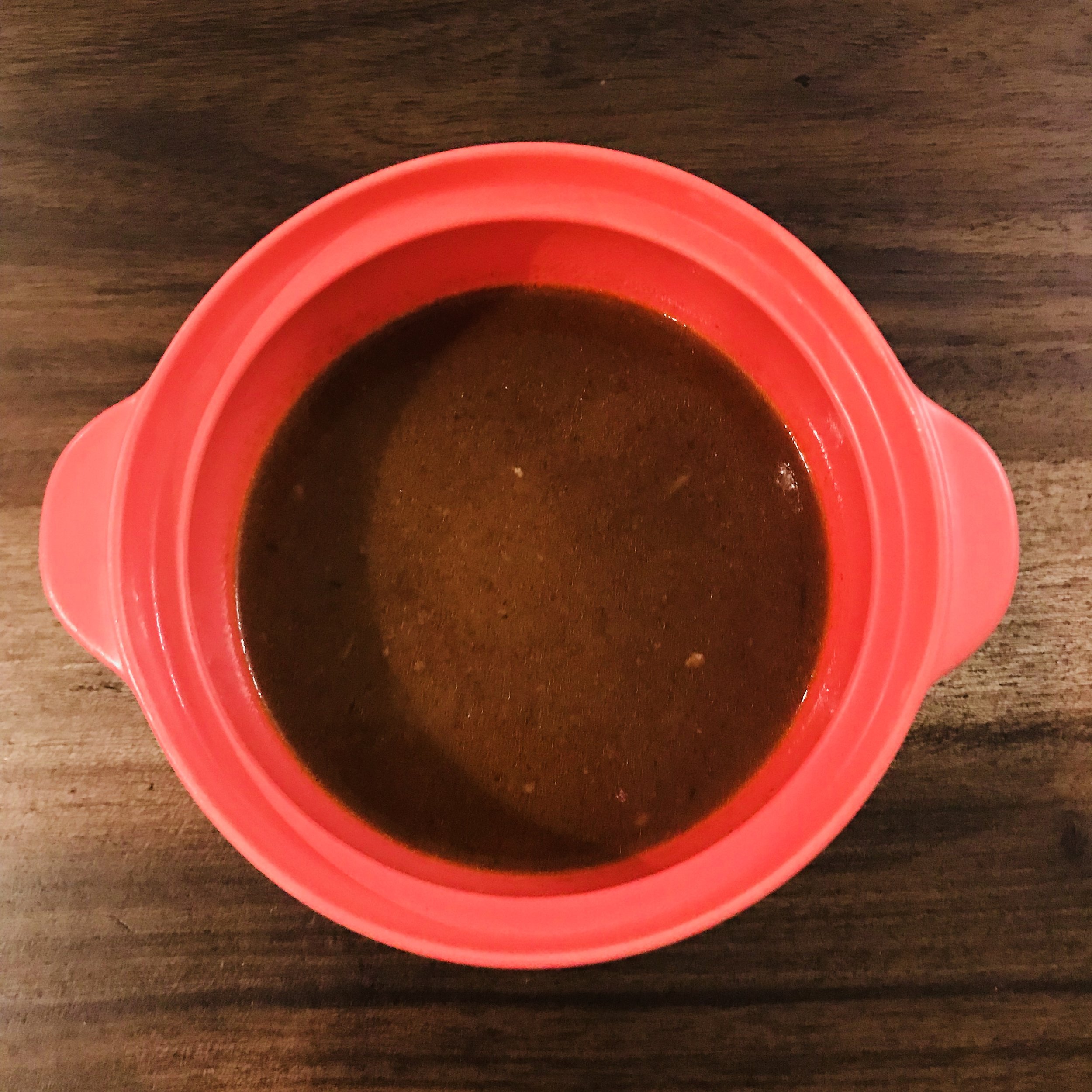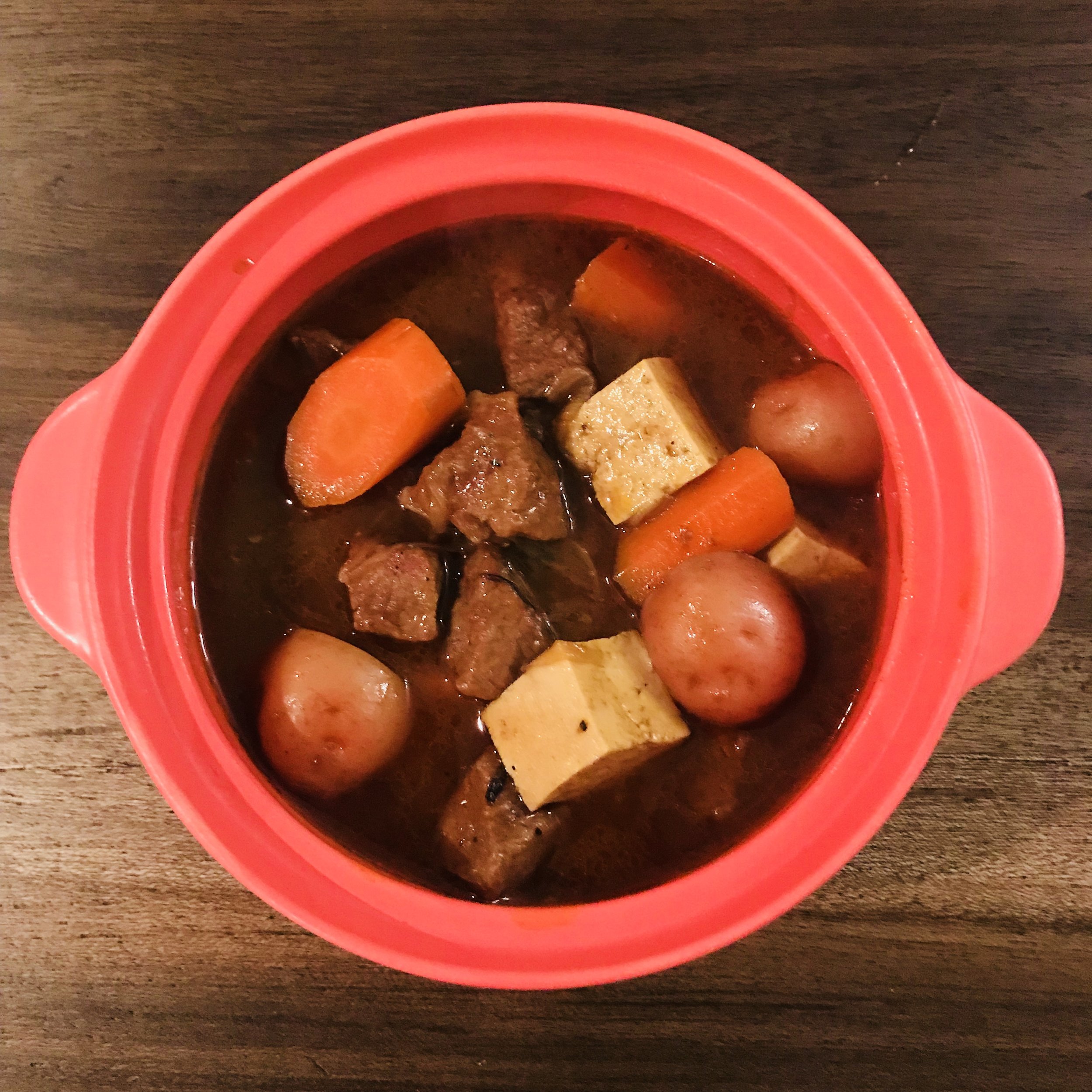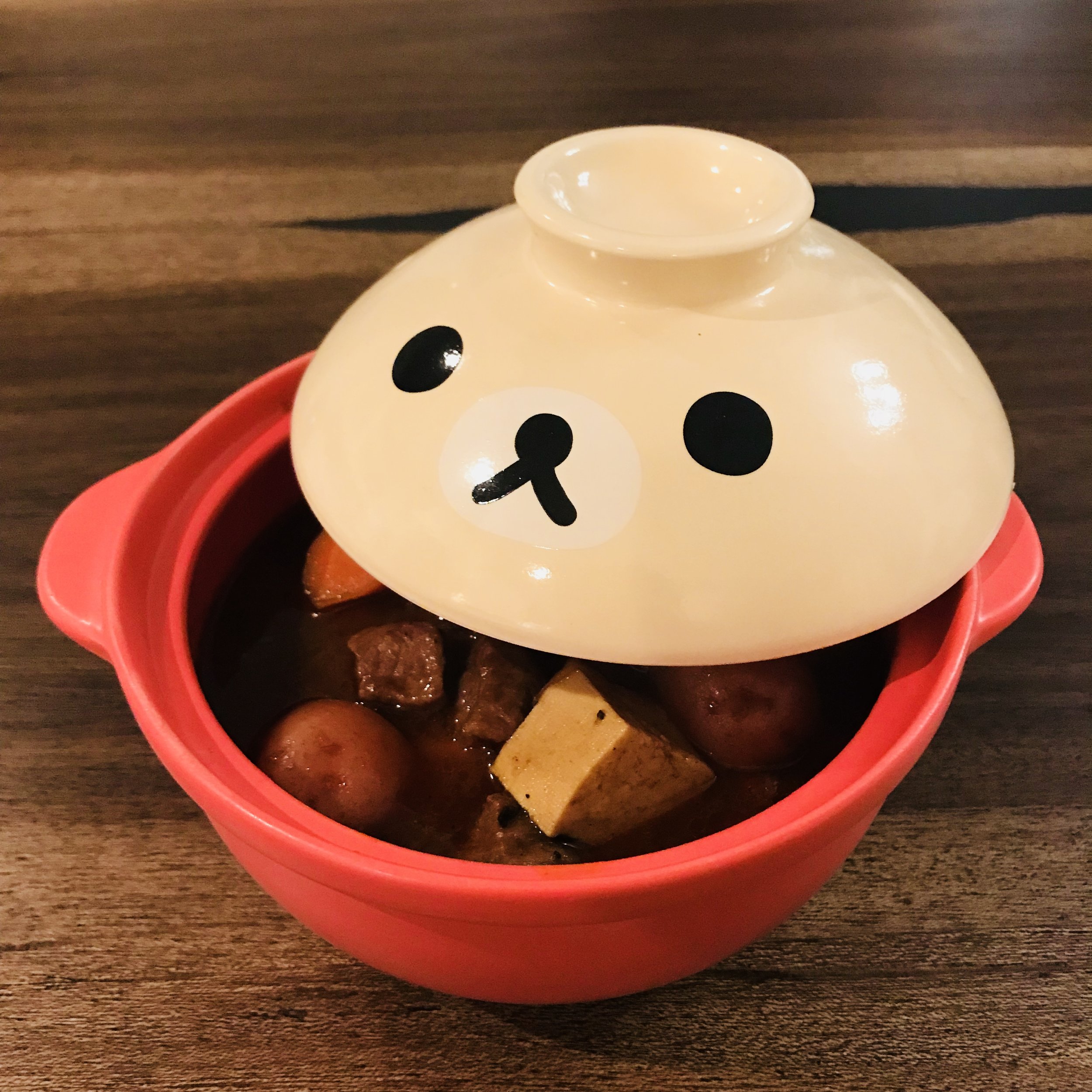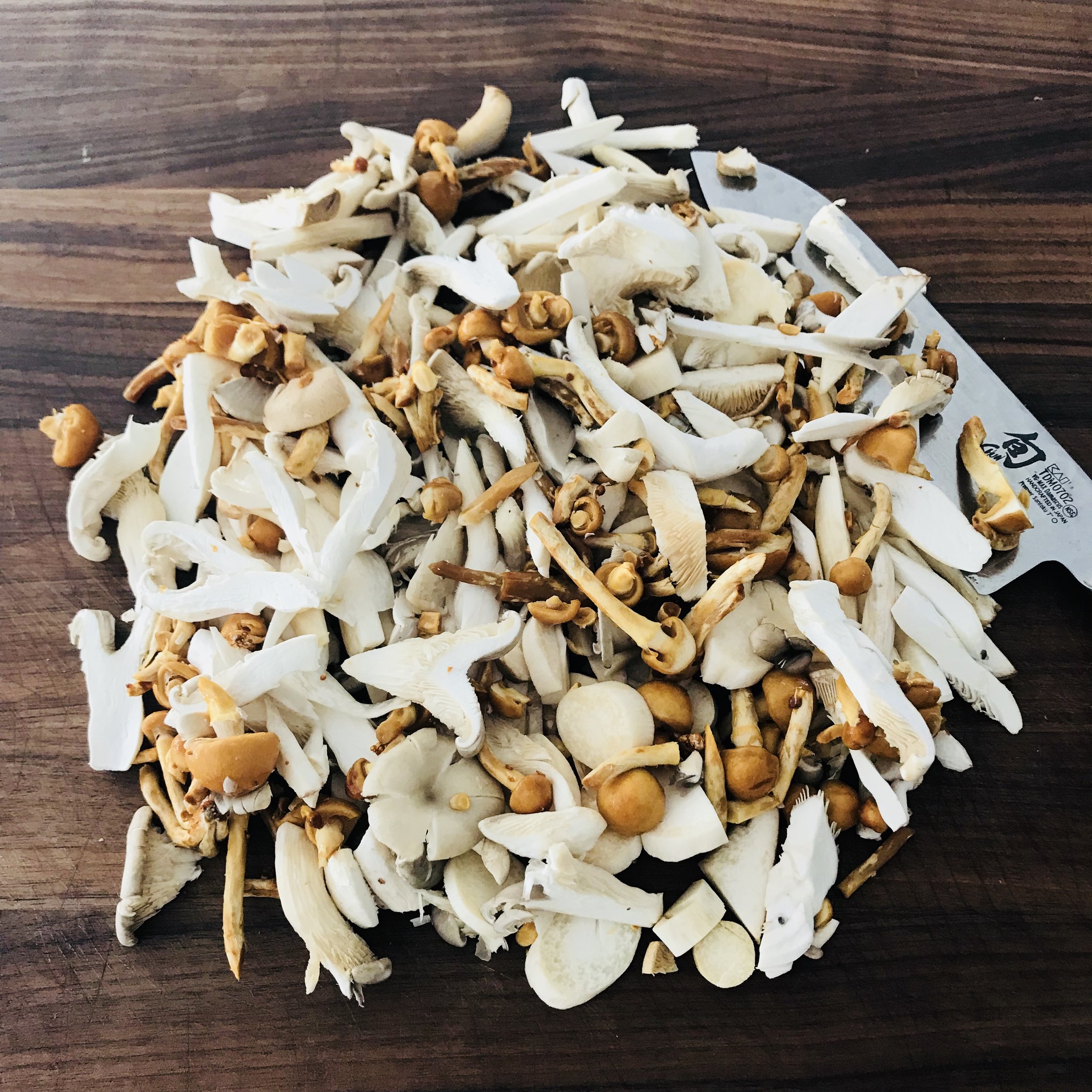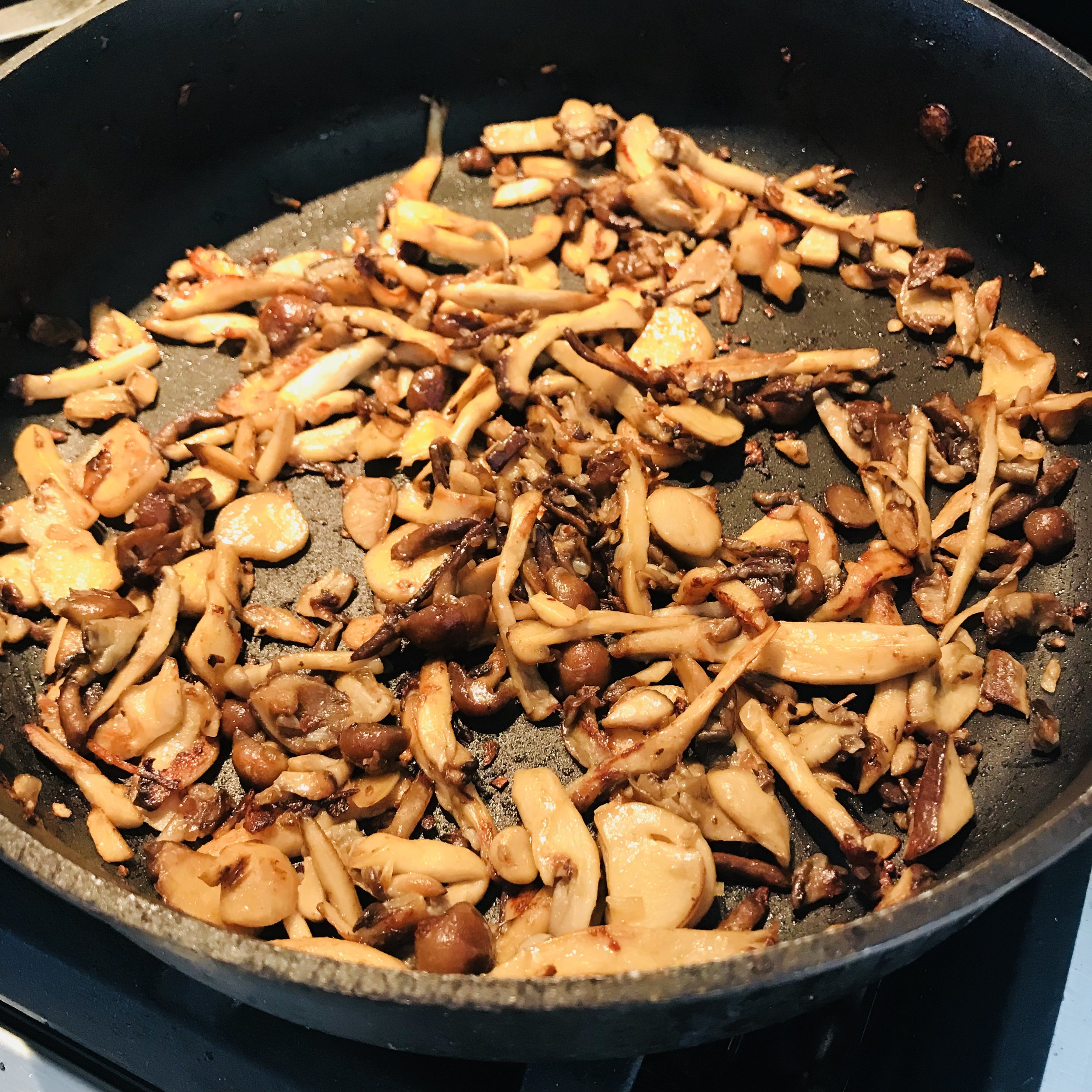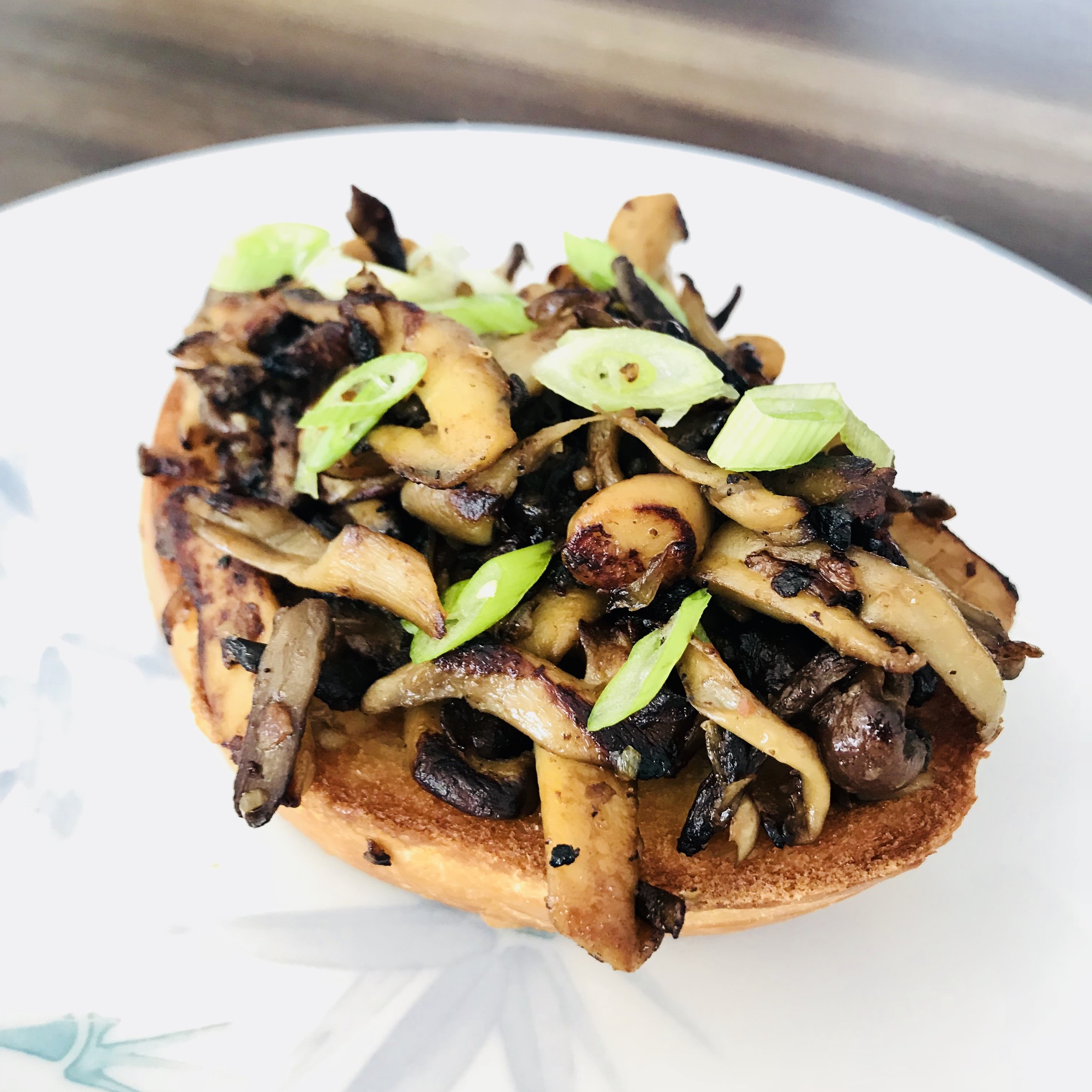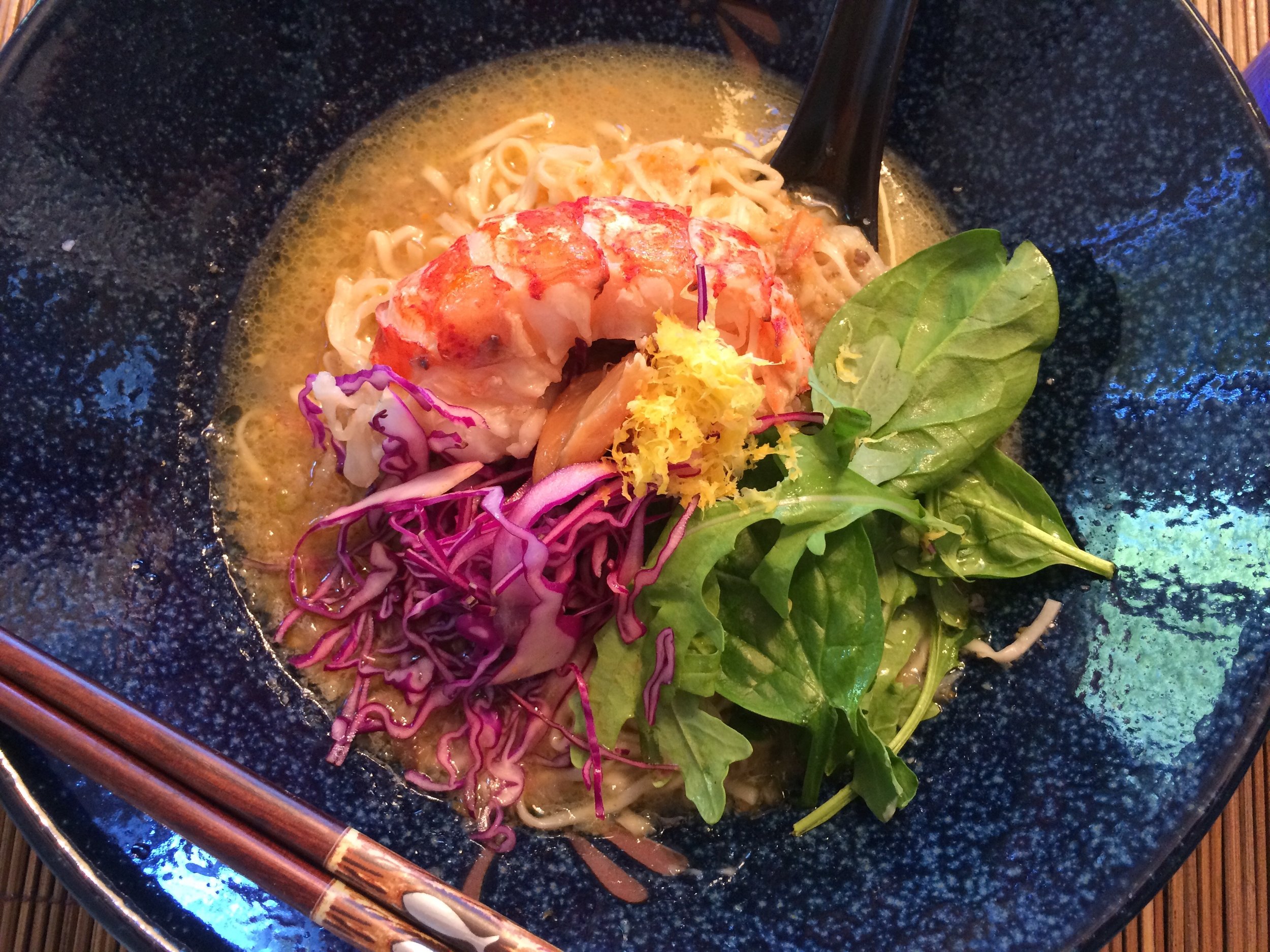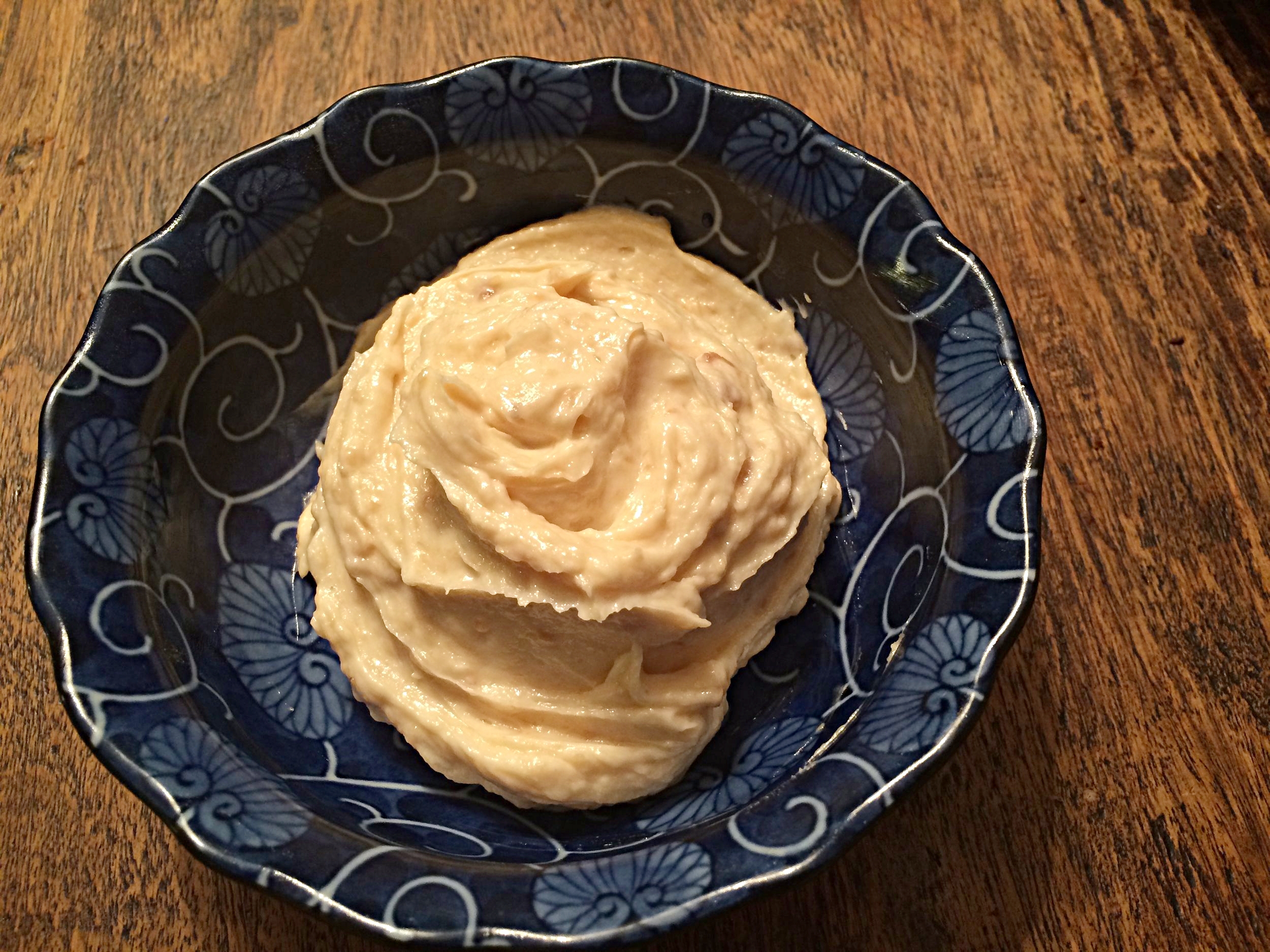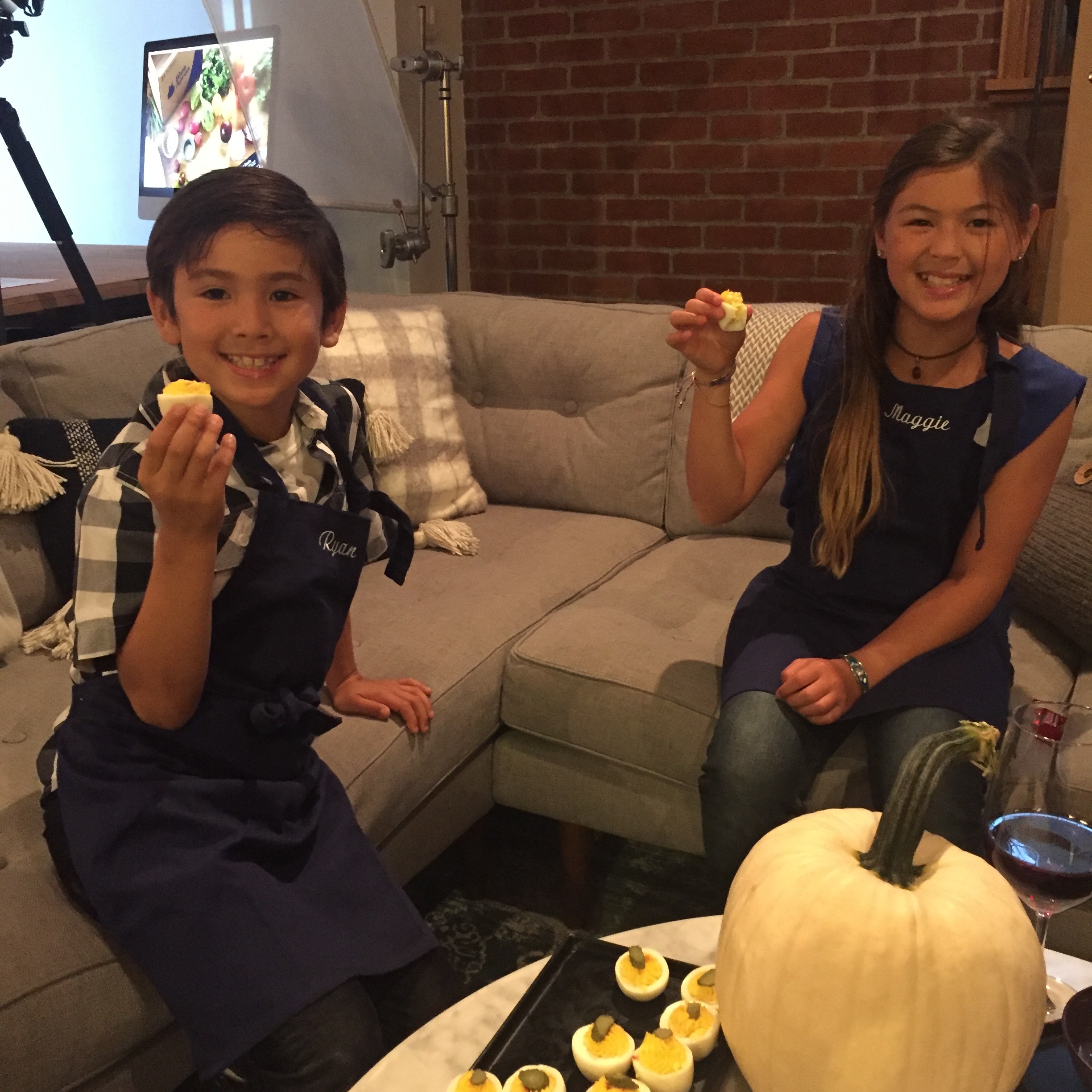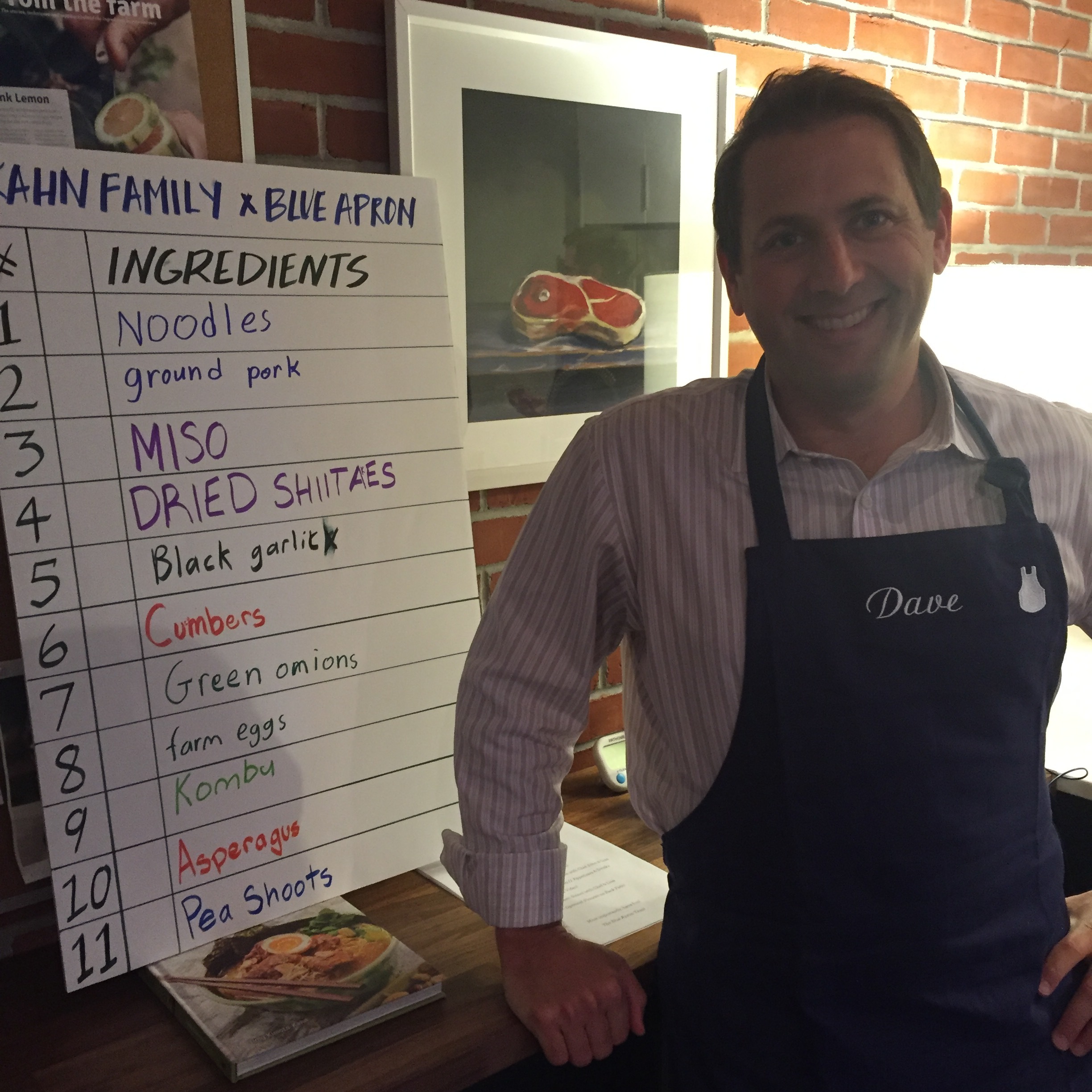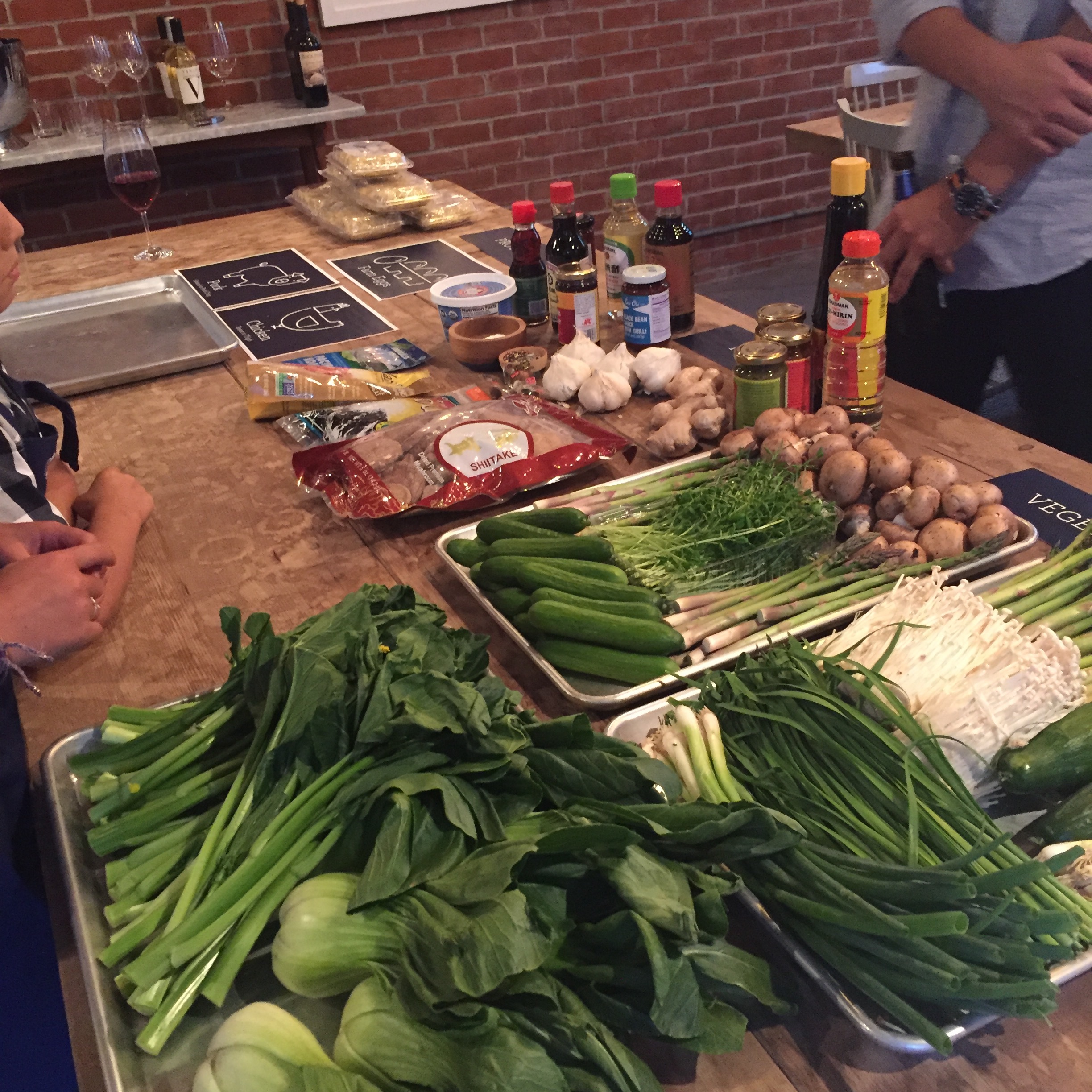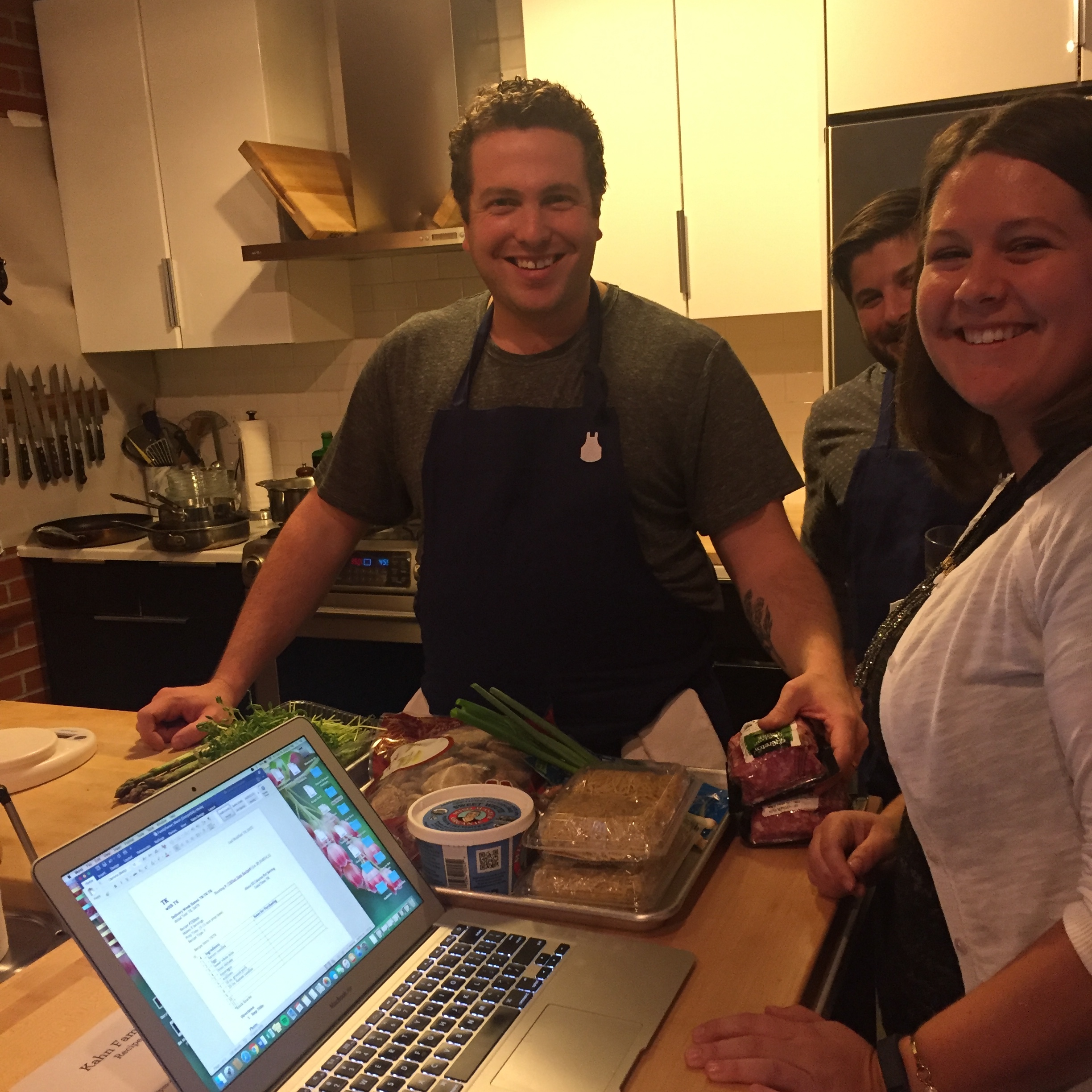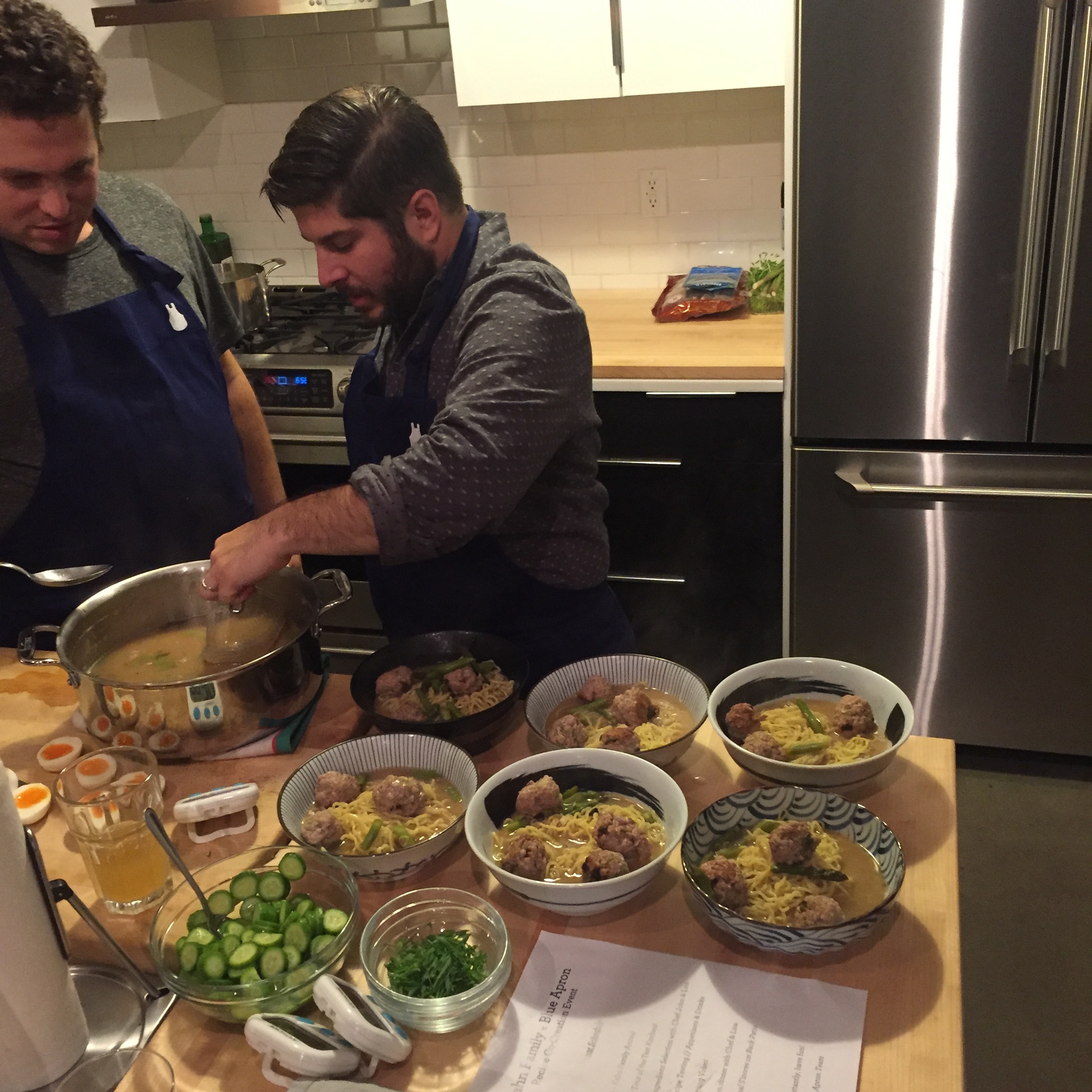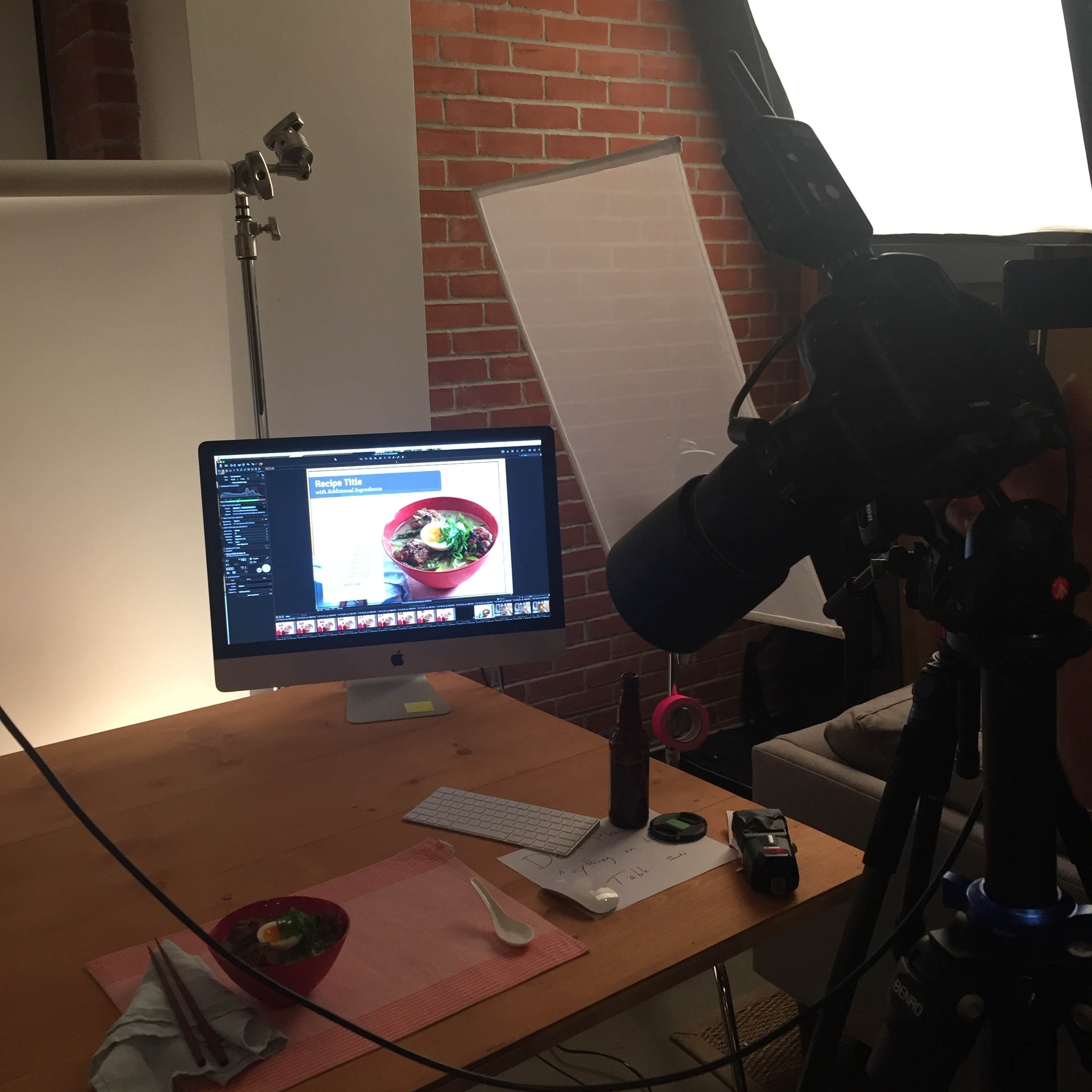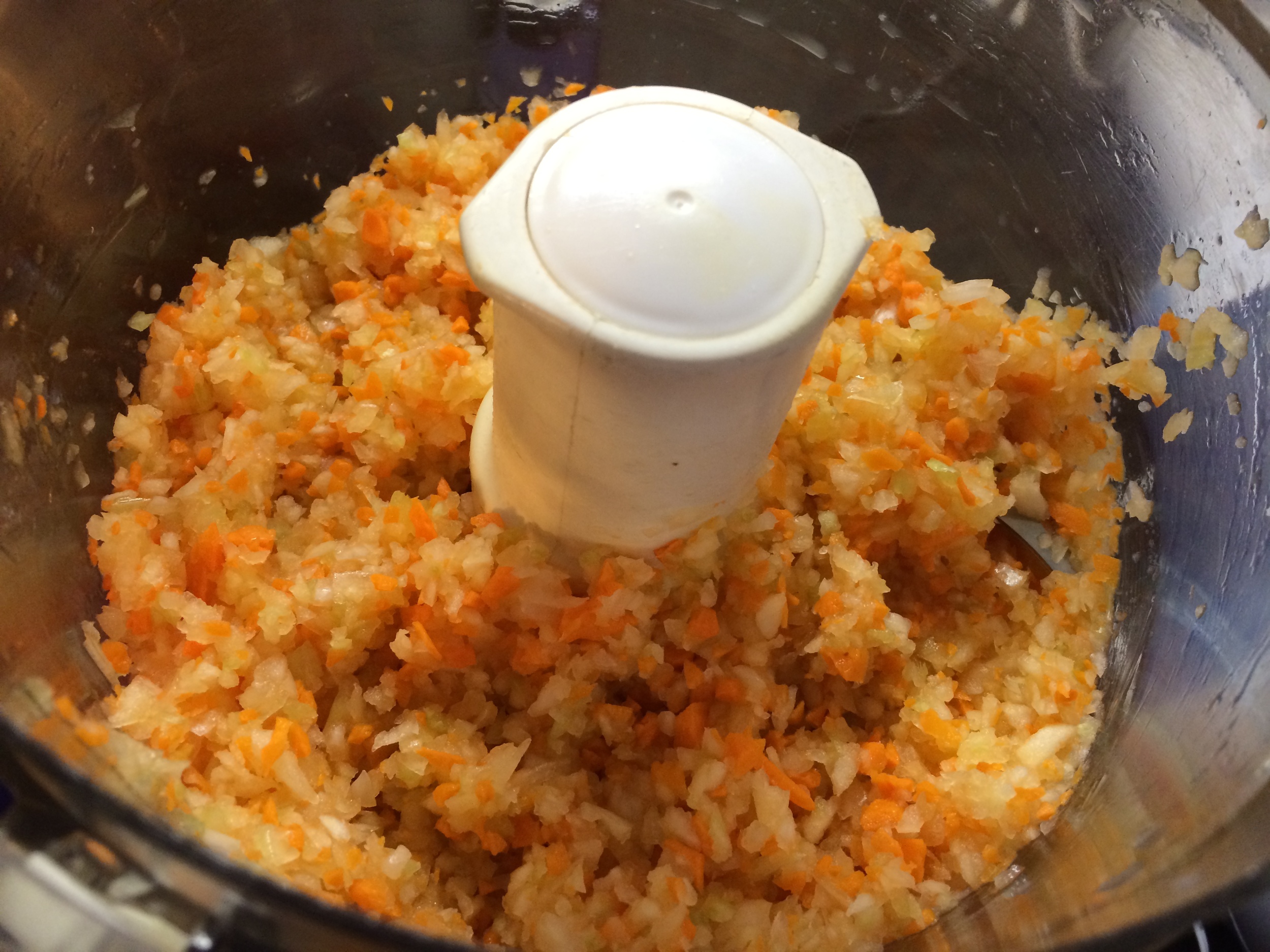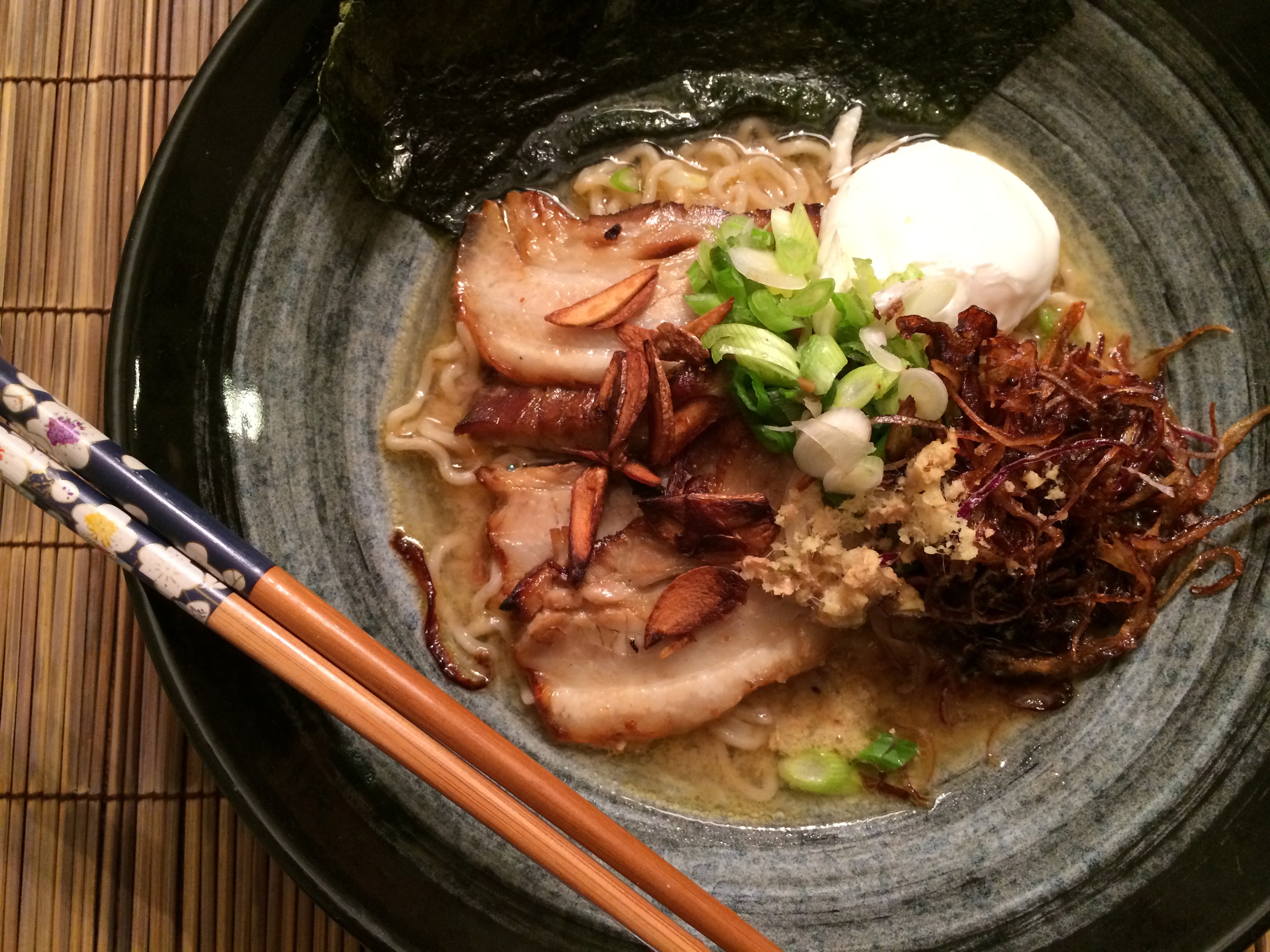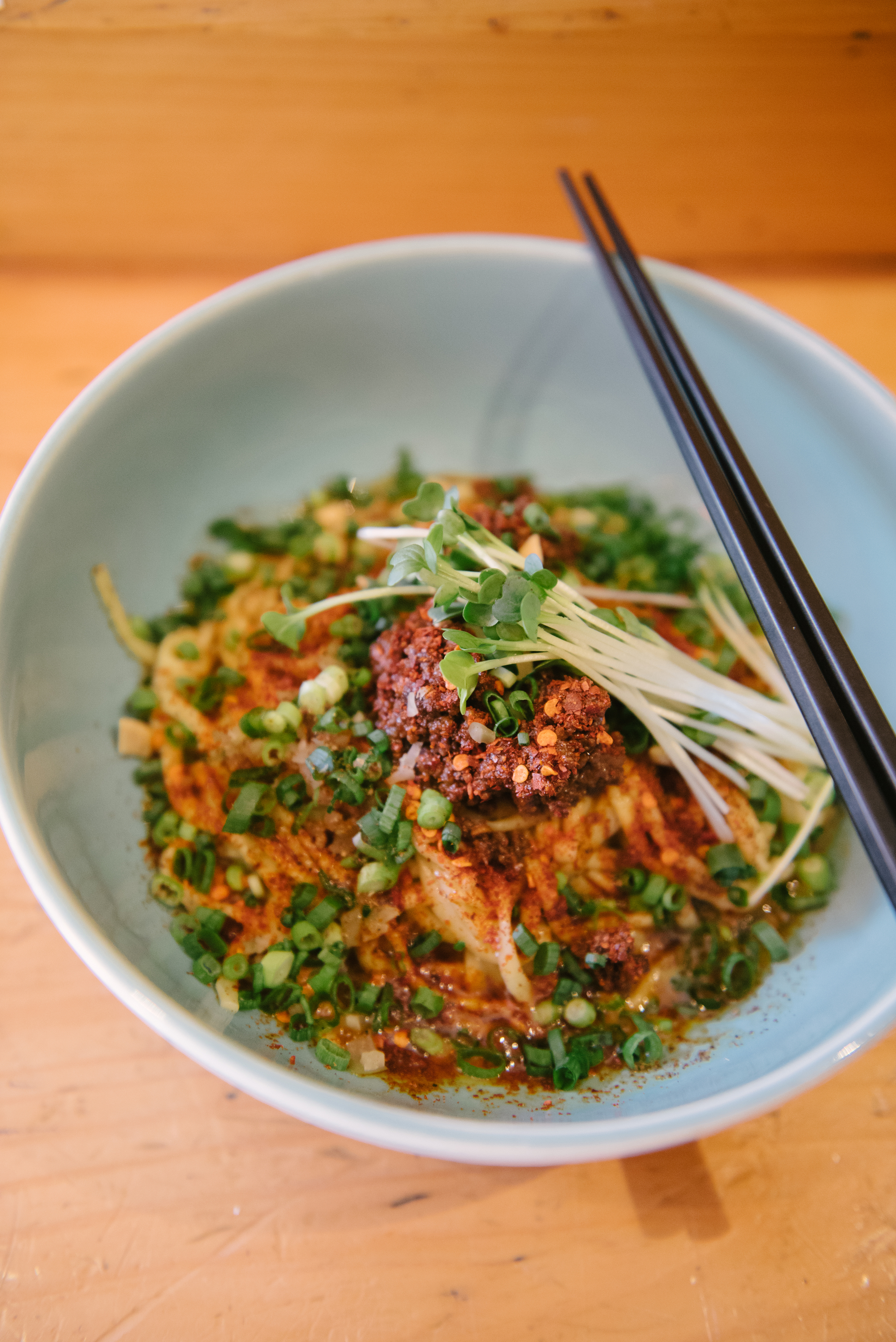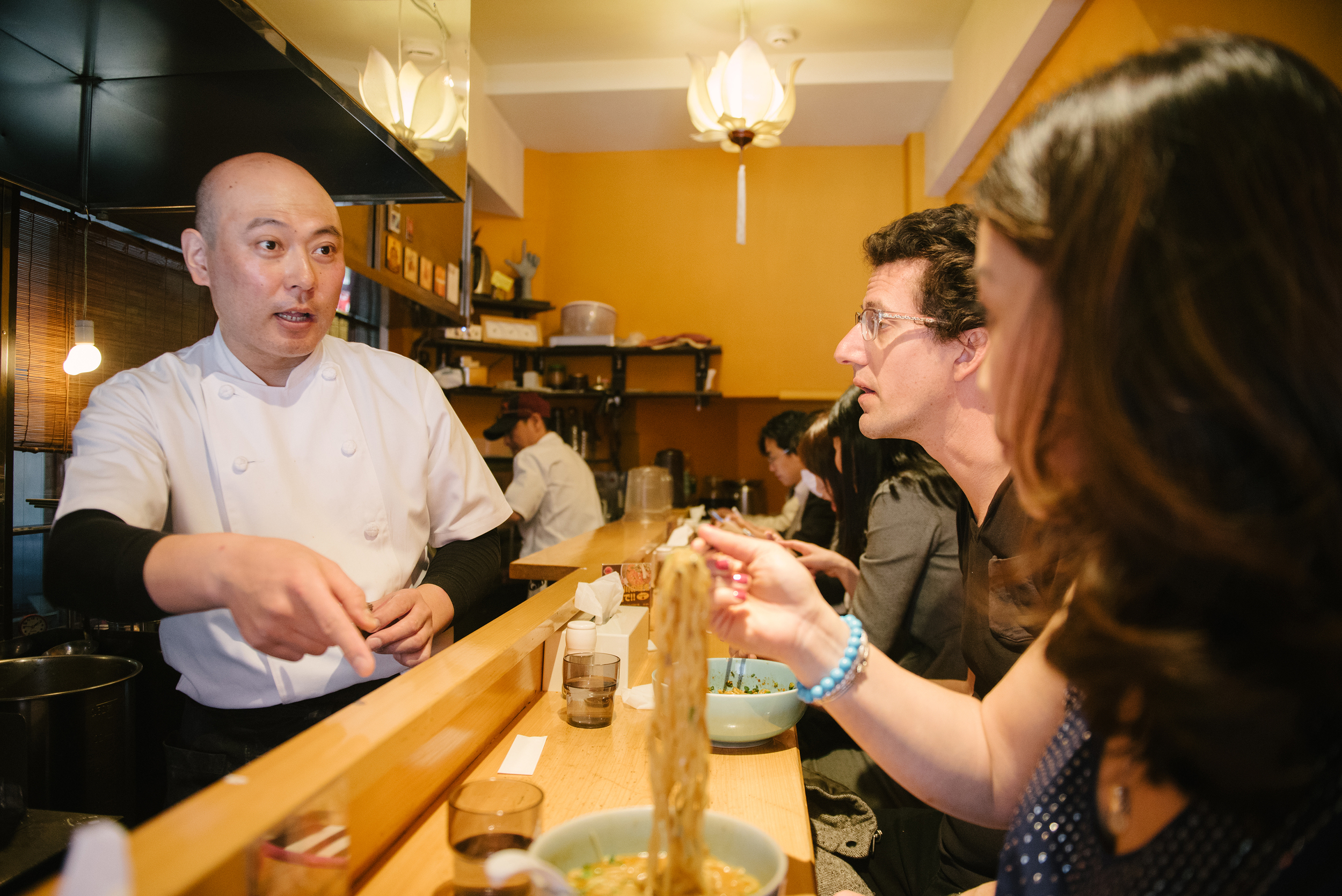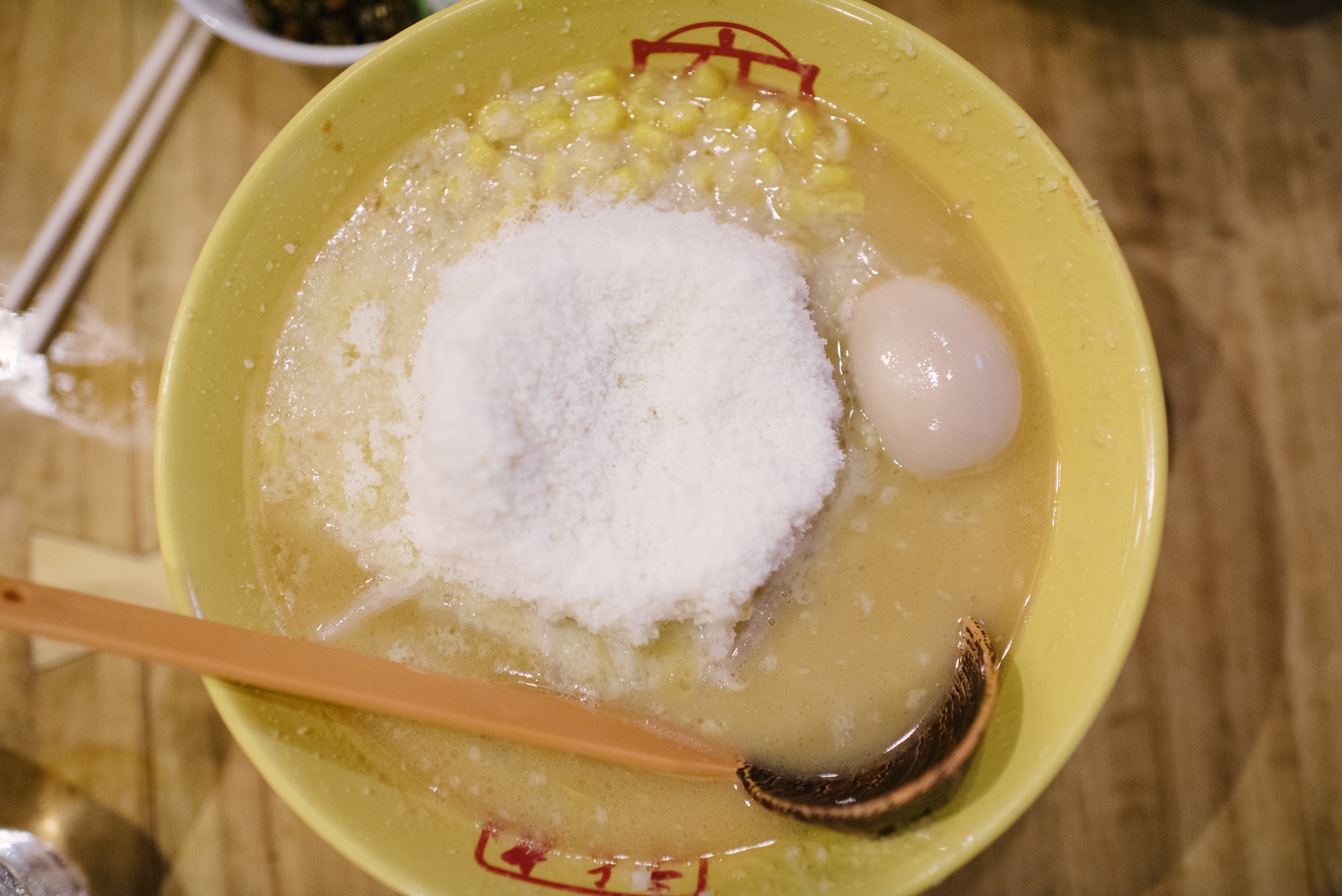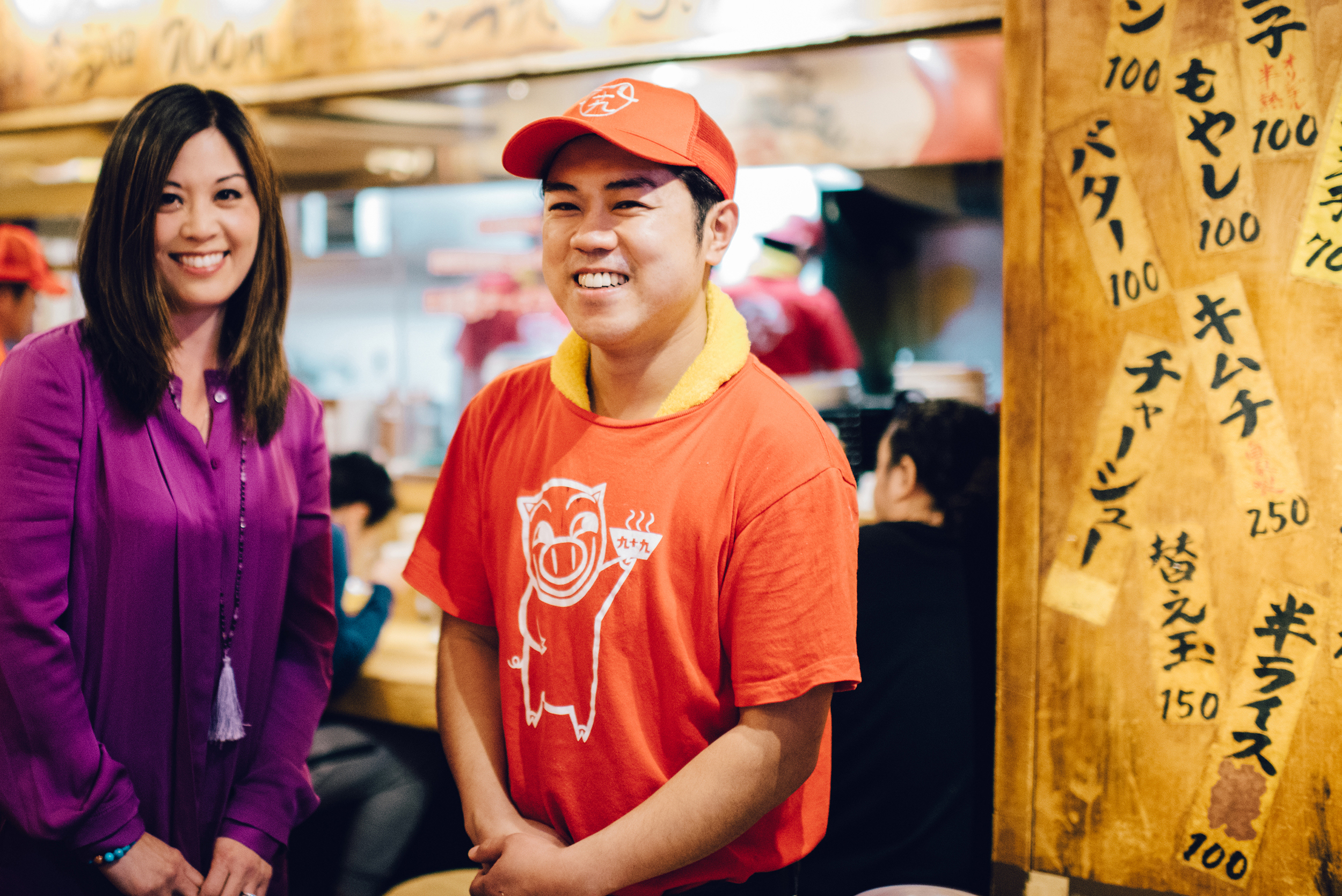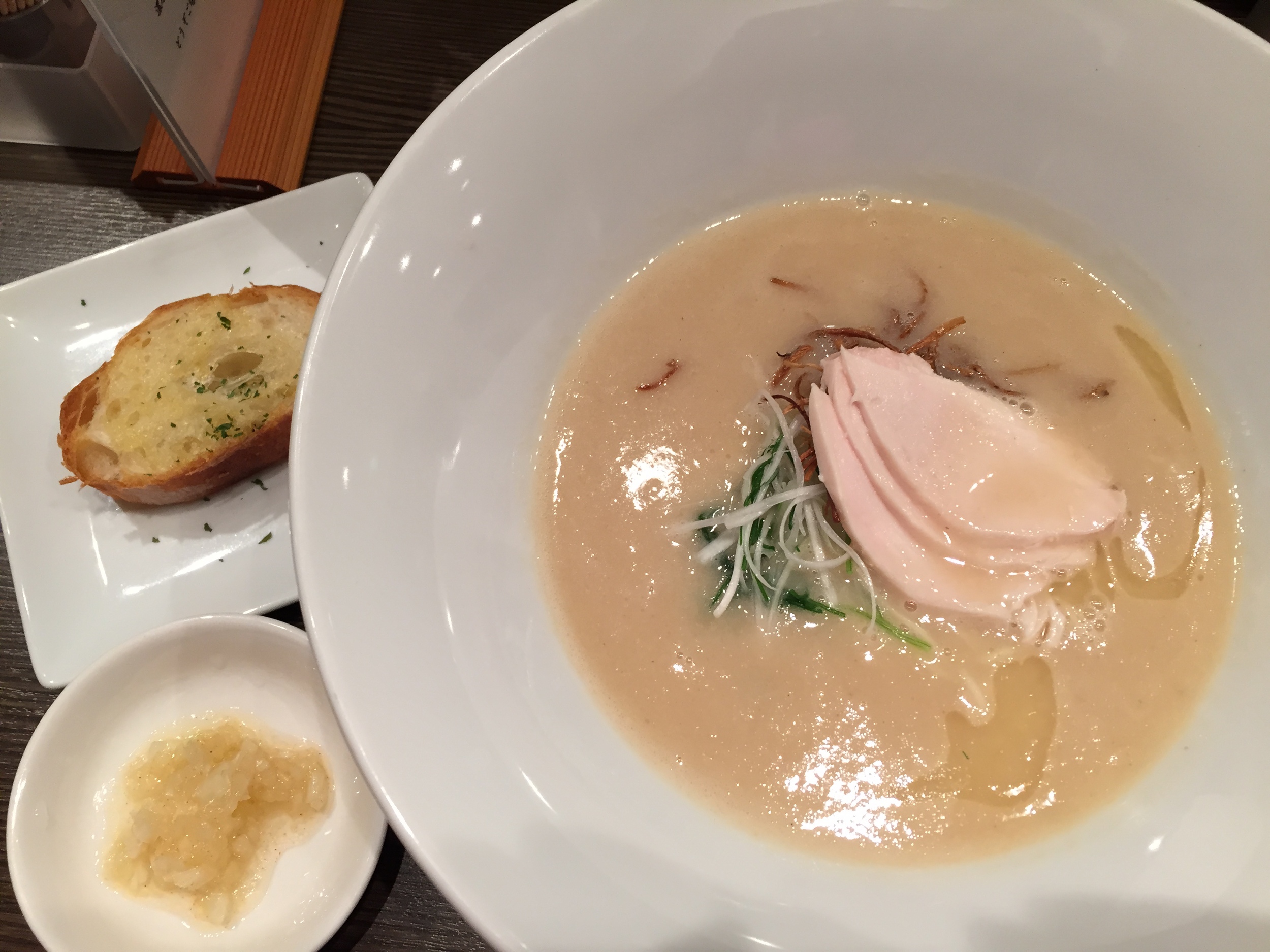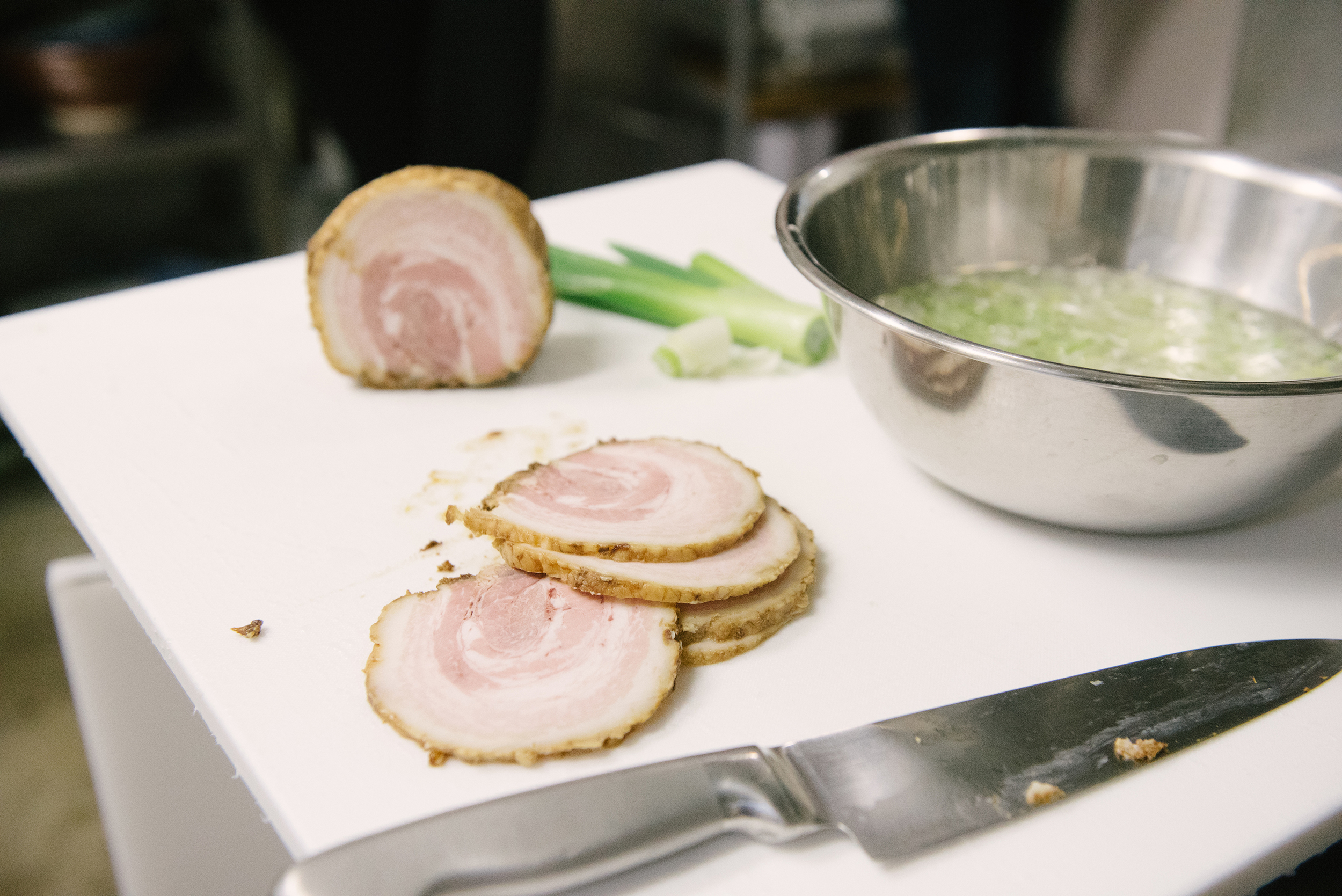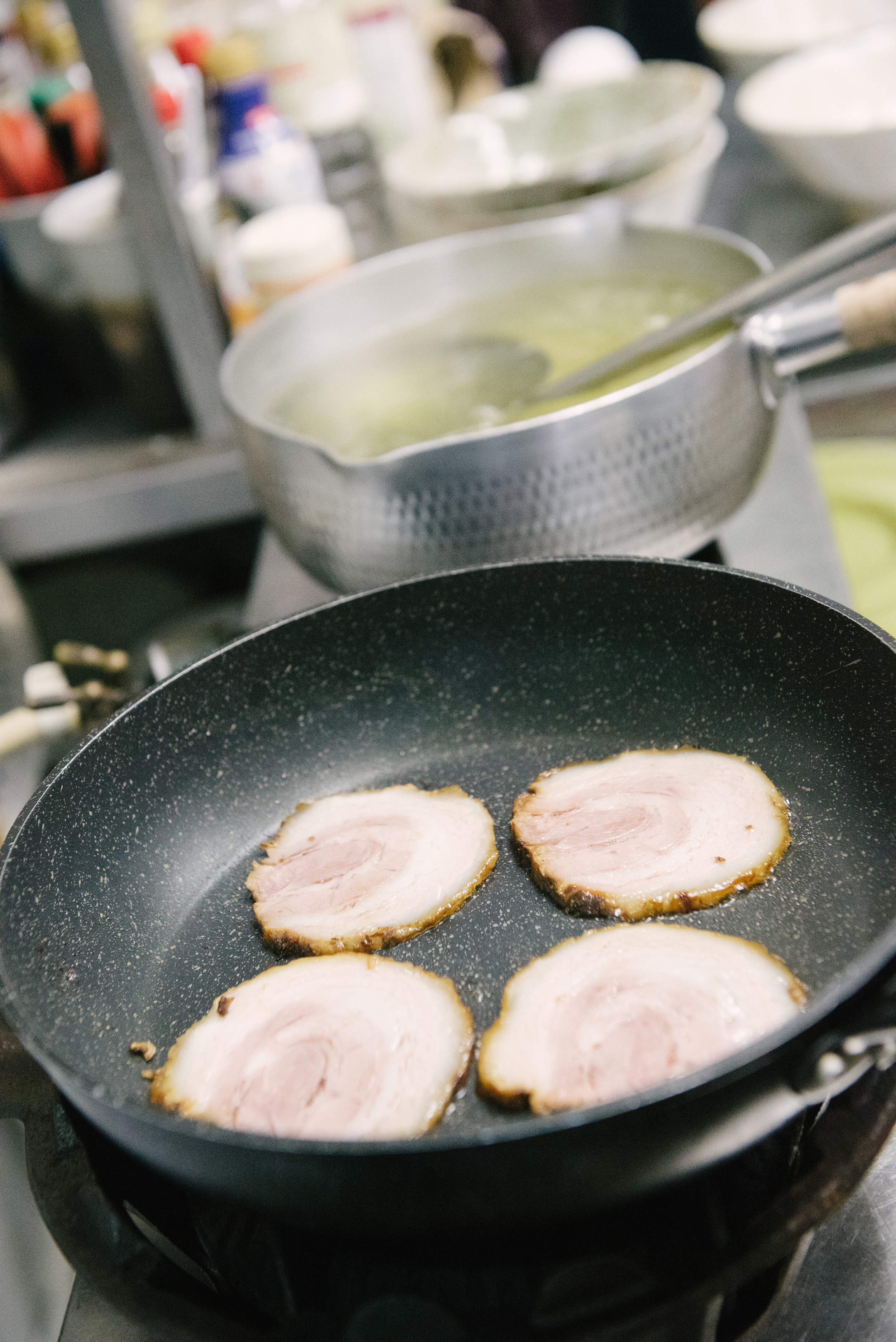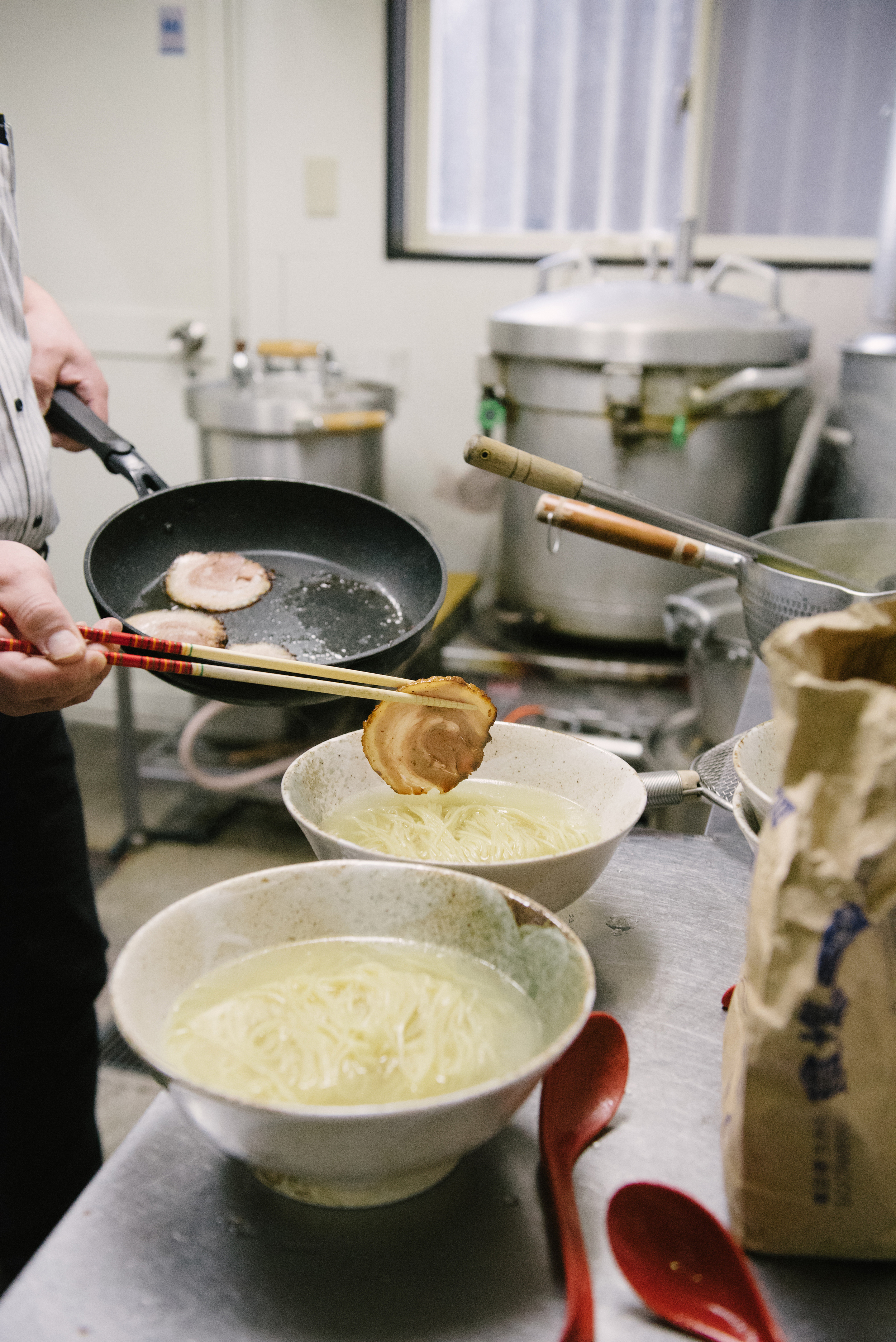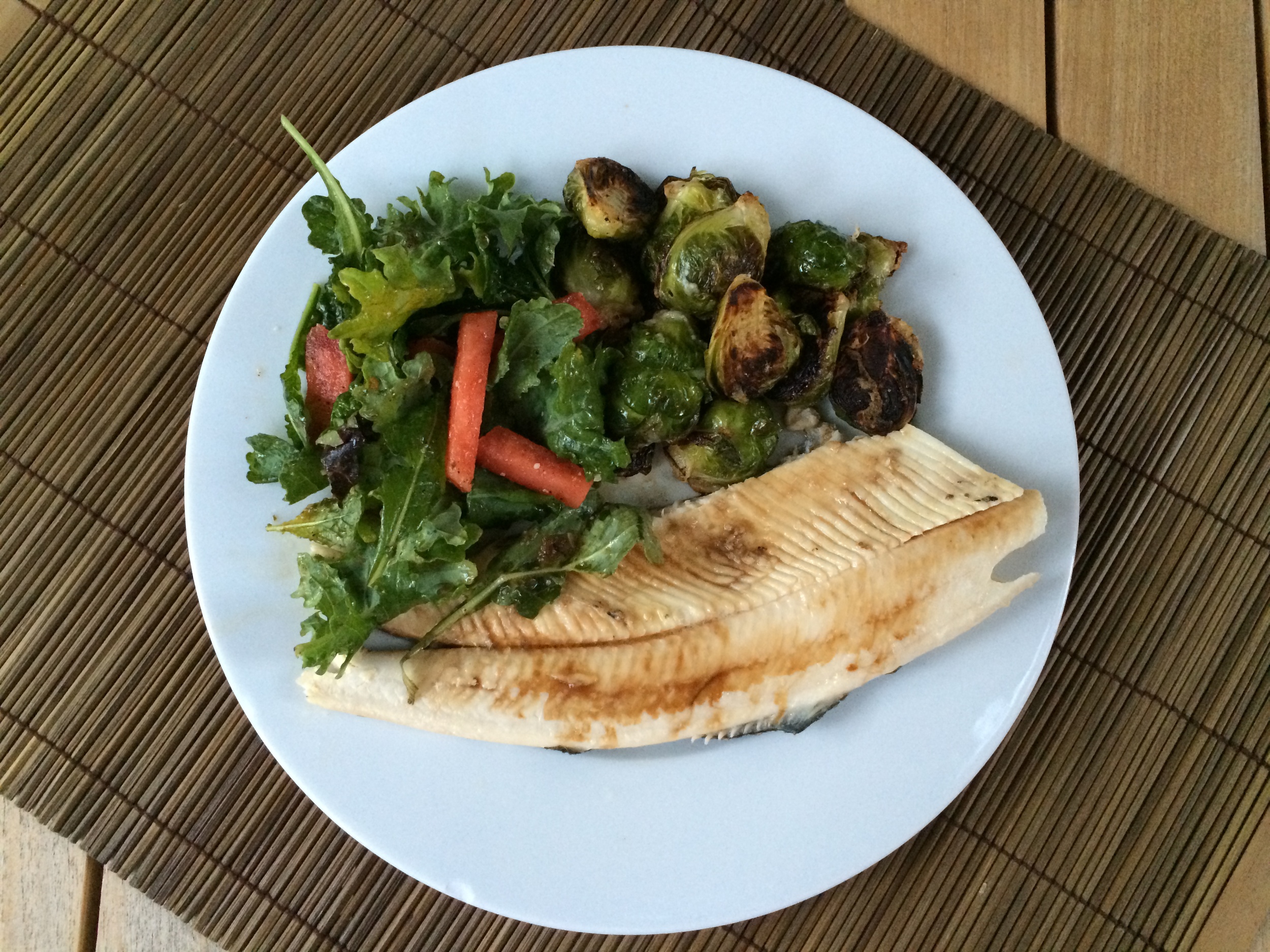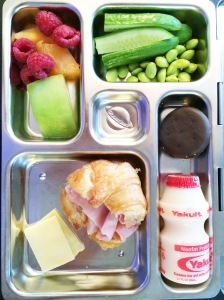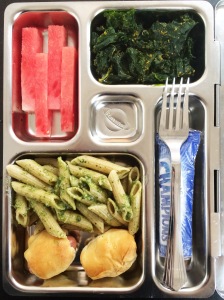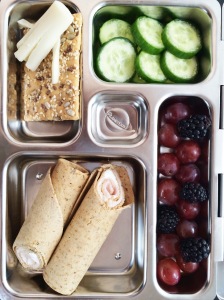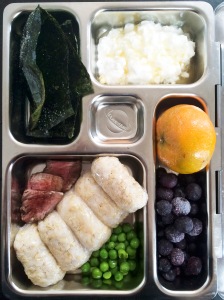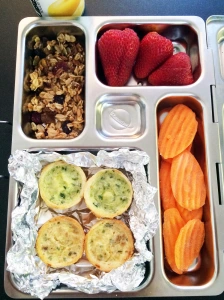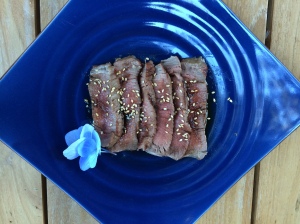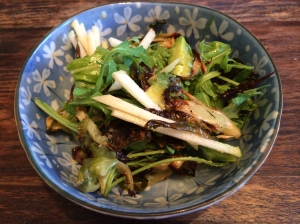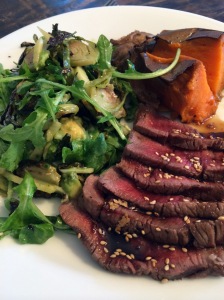This recipe starts off with the same components as my Miso Ramen Soup Base but I’ve added fresh and dried shitake mushrooms to give it added depth. It also incorporates the nice fatty flavor of bacon fat. I experimented with different types of salt for this recipe to see which came through the best. I chose fleur de sel because I liked the earthiness that it added without it being overwhelmingly salty and it helps keep the taste of the soup lingering on the palate. You can make your own original recipe with any special salt you have on hand.
Shio Ramen Soup Base
Serves: up to 12 servings
Prep time: 45 minutes for making Shio Base, 15 minutes for making broth plus time required to make Ramen Noodles (optional) and topping
Shio Base Ingredients:
1 medium carrot, peeled and chopped
½ onion, peeled, large dice
3 green onions, white part only, chopped
½ apple, peeled, seeded, and chopped
1 celery stalk, large dice
3 cloves garlic,
5 fresh shiitake mushrooms
1/2 cup bacon fat*
1 tablespoon sesame oil
3 teaspoons dashi granules (Japanese stock)
2 tablespoons fleur de sel
Broth ingredients:
Unsalted butter ( 2 tbsp per serving)
low sodium chicken or vegetable stock (2 cups per serving)
Mirin (Japanese rice wine) (2 tbsp per serving)
1 large rectangular piece of kombu (about 10” length) – cut into large squares (1 square per serving)
dried shiitake mushrooms, crumbled (2 mushrooms per serving)
salt as the miso base is very salty.
These components need to be made ahead of time:
Ramen Noodles – See recipe for Homemade Ramen Noodles
Chashu and Marinated Half-Cooked Egg - See Chashu and Marinated-Half Cooked Egg recipe
Recommended Toppings:
negi or green onions, fresh spinach, chashu (pork belly), marinated half-cooked egg, garnish with nori (seaweed) square(s).
* you can omit the bacon fat if you don’t have any but we wouldn’t recommend it. Next time
you are cooking bacon in the morning, simply save your fat in a container and refrigerate it!
Directions:
1. In a food processor combine the carrot, onion, green onion, apple, celery, garlic and fresh shiitake mushrooms and process until very finely chopped, almost like a paste. It's better to use a food processor, but if you don't have one, finely chop these ingredients by hand.


